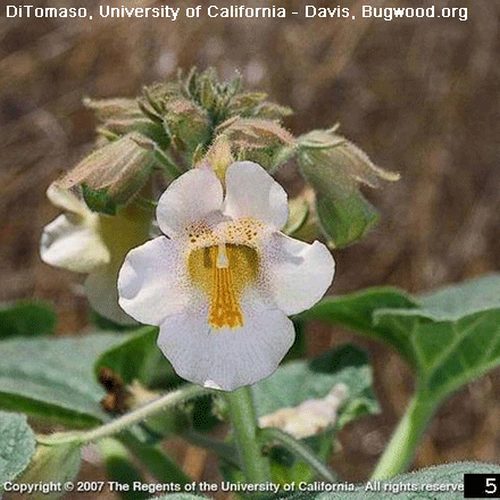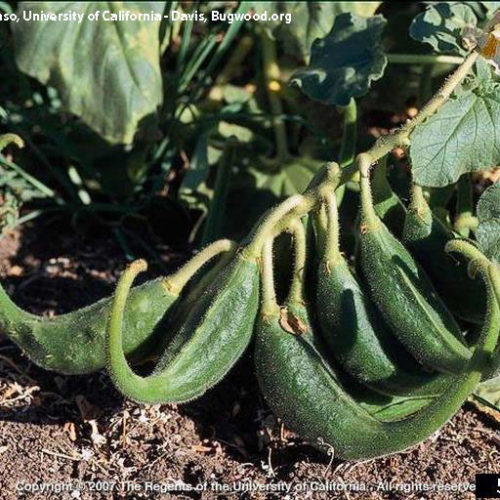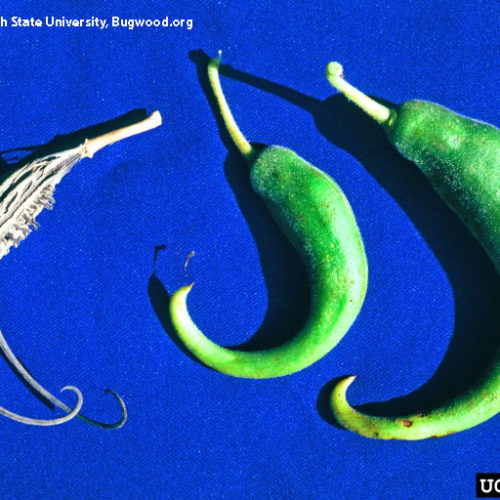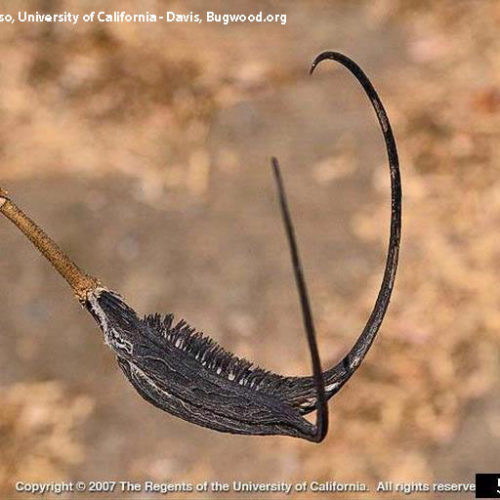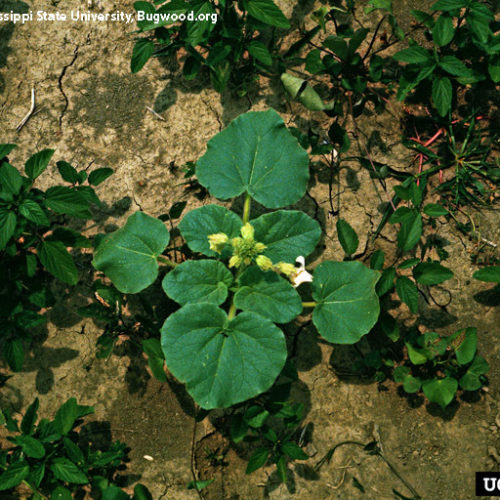Unicorn Plant
Proboscidea louisianica
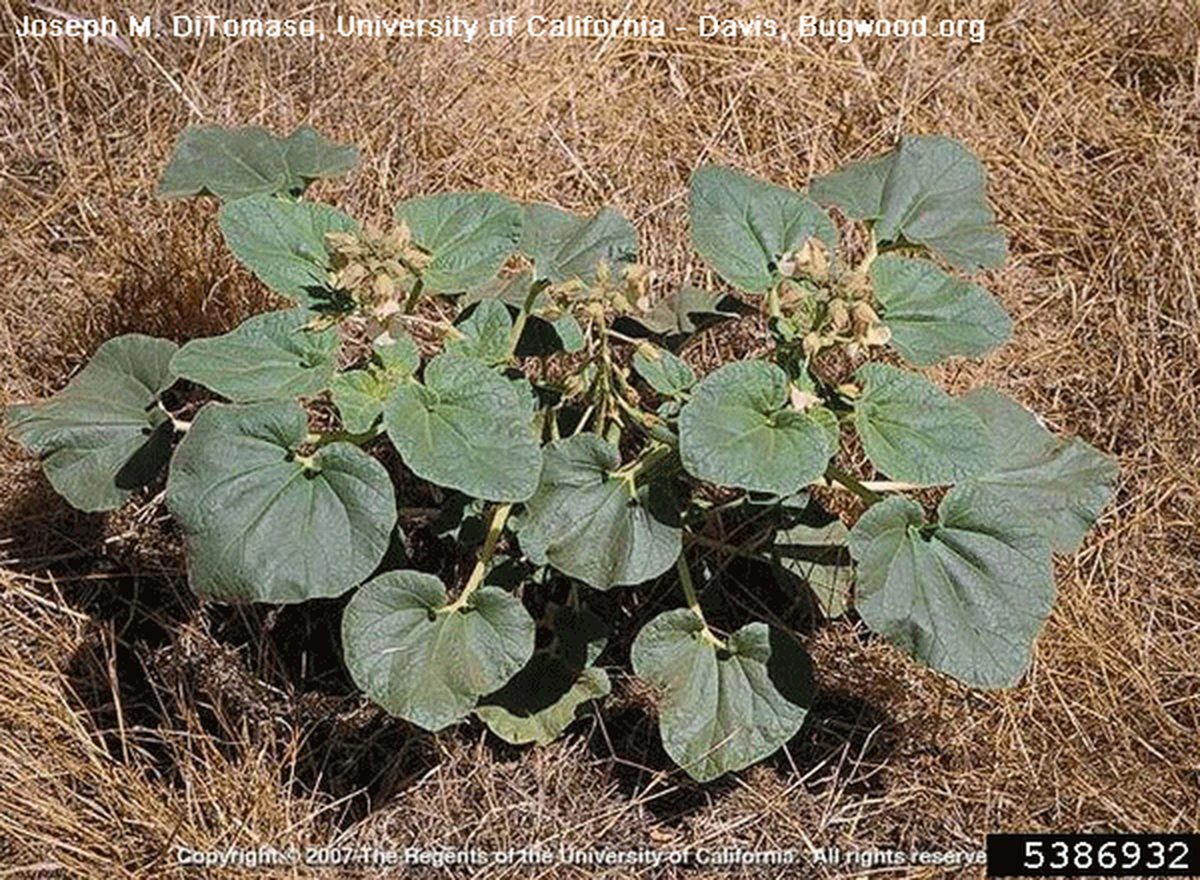
Family: Martyniaceae
Other Scientific Names:
Martynia louisianica
Other Common Names: Devil's claw, ram's horn, aphid trap, elephant tusks
Weed class: noClass
Year Listed: 1998
Native to: Parts of North America
Is this Weed Toxic?:
Not known to be
Legal listings:
This plant is on the quarantine list. It is prohibited to transport, buy, sell, offer for sale, or distribute plants or plant parts of quarantined species into or within the state of Washington or to sell, offer for sale, or distribute seed packets of seed, flower seed blends, or wildflower mixes of quarantined species into or within the state of Washington. Please see WAC 16-752 for more information on the quarantine list.
Why Is It a Noxious Weed?
This plant is on the monitor list - it is not a listed noxious weed in Washington. Please contact its sponsor Loretta Nichols to report locations or for more information.
How would I identify it?
General Description
This is a spreading, annual plant, that can get over 30 feet wide.
Flower Description
A tube shaped flower that trumpets out into 5 petal lobes, which are white to lavender to pink. The top two lobes curl up and backwards, while the two side lobes curl sideways and backwards, and the bottom lobe spreads out downwards.
Leaf description
The narrow, oval leaves can be almost a foot long. They are covered in small hairs that have an oil gland on them, giving the plant an oily feeling when touched.
Stem description
Long stems are branching and tangle across the ground. Like the leaves, they are covered in small, oily hairs.
Fruit Seed Description
Long, curving and curling seed pods that are reminiscent of a jalapeno, but more pointed and narrow. The pods start green and ripen to brown, before popping open, giving a ram's head apperance. These can be up to a foot long. The seeds inside are black or white.
Where does it grow?
Disturbed and open areas, like agricultural fields and empty lots.
How Does it Reproduce?
Seed.
How Do I Control It?
Please refer to the PNW Weed Management Handbook, or contact your county noxious weed coordinator.
For More Information
Invasive Plant Atlas information and images



